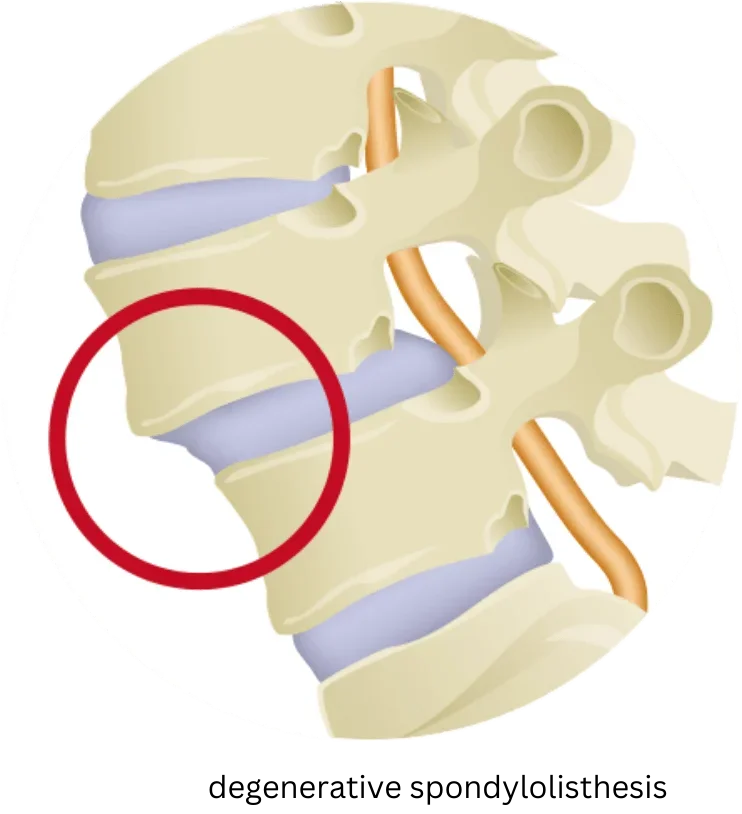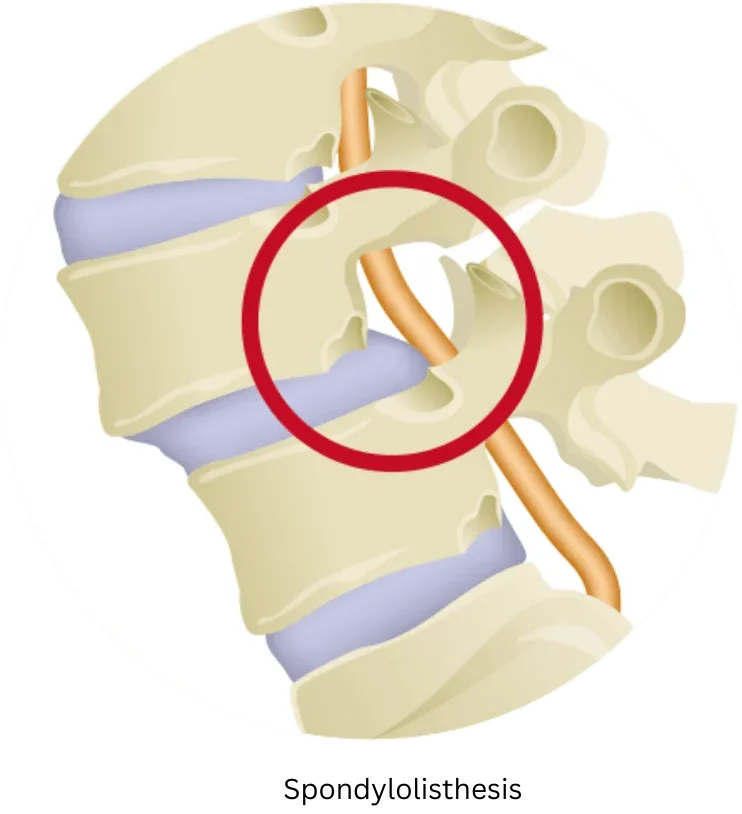Column How to Choose a Hospital for Spondylolisthesis Treatment: What Key points Should You Keep in Mind When Choosing Your Doctor?
August 03, 2023
Sometimes, the joints in the spine, called facet joints, and intervertebral discs can develop abnormalities, causing the bones to become misaligned. This is known as spondylolisthesis.。
What is spondylolisthesis?
There are two types of spondylolistheses: an anterior slip, in which the bone slips forward, and a posterior slip, in which the bone slips backward.
Spondylolisthesis can also be classified into “lumbar degenerative spondylolisthesis” (LDS) and “lumbar spondylolisthesis. Lumbar degenerative spondylolisthesis” is a symptom of back pain caused by a lumbar vertebra that has shifted from its original position. On the other hand, “lumbar spondylolisthesis” occurs when the back of the lumbar vertebrae become unstable due to cracks in the back portion of the spine caused by strain from the misalignment of the spine.


Causes of lumbar spondylolisthesis
Lumbar spondylolisthesis occurs when the tissues that hold the lumbar spine in place, such as the intervertebral discs, ligaments, and joints, degenerate as a result of playing sports and other activities from a young age, and as a result, the stability of the lumbar spine is lost.
Recent research indicates that intervertebral disc degeneration is a factor in the development of slipped vertebrae.
Degeneration of the intervertebral discs places stress on the spine and intervertebral joints, causing instability of the bones and other parts of the spine, which in turn leads to spondylolisthesis.
* Reference 1: Akkawi, H. Zmerly. Degenerative Spondylolisthesis: A Narrative Review. Acta Biomedica, vol. 92, No.6, 2021.
Symptoms of spondylolisthesis
Symptoms of spondylolisthesis are back pain, pain and numbness in the buttocks and lower extremities. The appearance of symptoms depends on the degree of instability of the spondylolisthesis, the degree of degeneration of the intervertebral or isolated area, and the location and degree of nerve compression.
One of the typical symptoms of a spondylolisthesis is numbness and pain in the buttocks and thighs that appears while walking. Intermittent claudication, which allows the patient to walk again after a short break, is common.
Degenerative spondylolisthesis is often associated with spinal stenosis, and symptoms of stenosis such as leg pain, numbness, intermittent claudication, and dysuria are present.
On the other hand, in the case of spondylolisthesis, pain may be intensified by movements that place stress on the separated part of the spine, such as bending the hips backward, and pain and numbness in the lower extremities may occur if there is pressure on nerve roots in the separated area.
How to choose a clinic and questions you should ask the doctor
Many people will consider treatment after being diagnosed with a spondylolisthesis, but they may be wondering where to seek treatment.
When considering a hospital for treatment, the number of treatments and cases is often the most important factor. The greater the number of cases treated, the more experienced the physician performing the procedure. And the greater the number of cases, the greater the likelihood that the treatment will suit your condition and your symptoms. However, the number of cases may not be disclosed, so it is best to check the number of cases during the pre-treatment consultation.
If you are interested in minimally invasive treatment* with low postoperative risk, the doctor’s skill is an important factor. The more minimally invasive the treatment, the more highly skilled the physician must be. If someone you know has been treated previously at the hospital you are considering, you should ask that person about the hospital and the treatment.
If you are concerned about treatment, you should choose a medical facility where you can take the time to listen to the doctors. You can take your time to listen to the doctor’s findings and treatment and ask your own questions to confirm any concerns you have.
Some people may wonder what questions to ask about a spondylolisthesis, so here are some questions you can ask your doctor.
What happens if a slipped vertebra is left untreated?
If a slipped vertebrae is left untreated, it will not return to its original state naturally. If left untreated, the spondylolisthesis will progress, and symptoms may become more severe and new symptoms may appear.
Once the spondylolisthesis is treated, will it ever recur?
Depending on the treatment you receive, it can recur. Check with your pre-treatment consultation regarding the post-operative recurrence rate and prevention of the treatment you are considering.
I would like to do certain activities after treatment, but will I be able to?
Your treatment options will depend on what you want to do after treatment. If you only want to relieve the symptoms of your spondylolisthesis, or if you want to exercise or play sports, your treatment options will be different. You should check with your doctor during your consultation.
*Minimally invasive treatment refers to treatment that is effective while reducing the strain on the body as much as possible. Advantages of minimally invasive treatment include smaller wounds and less pain, less noticeable postoperative scars, faster postoperative recovery, and shorter hospital stays.
Treatment of spondylolisthesis
Generally, the first step in the treatment of spondylolisthesis is conservative therapy. If symptoms do not improve with conservative treatment and are prolonged, surgery is often suggested.
Surgery is generally performed by lumbar fusion or posterior lumbar decompression, which removes or fixes the bone, so the surgical risk is high, and the recurrence rate (within 2 years) is high (30-46%) because it is not a causative treatment.
Our clinic offers the Cellgel method as a treatment for slips.
As mentioned above, since the factor that causes spondylolisthesis is considered to be disc degeneration, we believe that prevention of slippage cannot be achieved without repairing the degenerated disc. Therefore, we inject a gel-like drug into the degenerated intervertebral disc to repair it. The volume of the intervertebral disc is preserved without decreasing, preventing the progression of spinal misalignment that causes spondylolisthesis.
If you have been diagnosed with spondylolisthesis or are suffering from back pain, please consider seeing us for a consultation.



